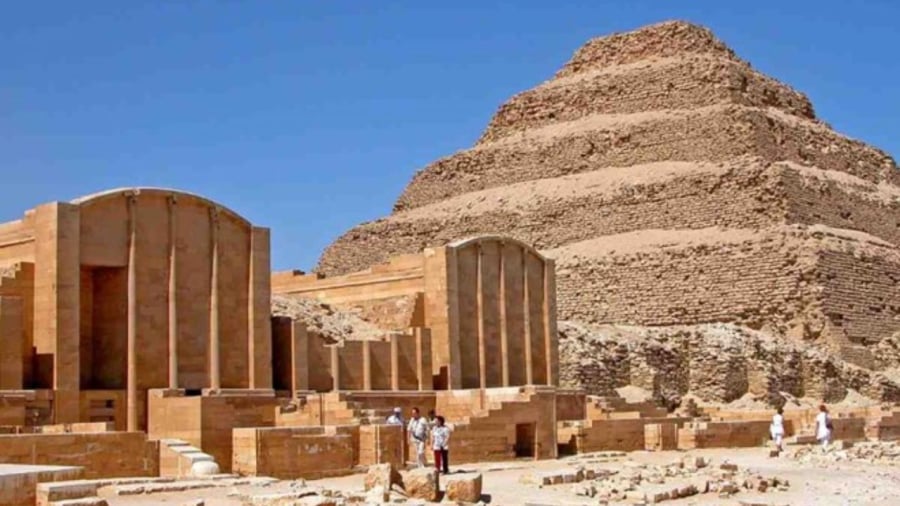The Djoser Pyramid, the oldest pyramid in Egypt and a symbol of the country, may have been constructed with the help of a unique hydraulic lift system, according to recent theories by scientists. In a study published on August 5, 2024, in the open-access journal PLOS ONE, Xavier Landreau from the Institute of Paleopractology at CEA in France and colleagues suggested the involvement of hydraulic power in the pyramid’s construction.
The research revealed the possibility of water flowing into two shafts located within the pyramid itself, which could have been used to lift and lower stone blocks.
Known as the Step Pyramid, the Djoser Pyramid is believed to have been built around 2680 BC, serving as a mausoleum for Pharaoh Djoser of the Third Dynasty of Egypt. The construction methods of Egyptian pyramids remain a mystery to archaeologists.

Egyptian Pyramid
However, in a new interdisciplinary analysis, experts suggested that the area surrounding the nearby Gisr el-Mudir – a previously unexplained structure – may have functioned as a dam to capture water and sediment. Additionally, a series of deep trenches outside the pyramid could have been used as a water treatment facility, allowing sediment to settle as water flowed through successive compartments. Thereafter, water could have been directed into the pyramid’s shafts, where the upward force of the water would have aided in lifting the massive stones.
Further investigations are needed to understand how water flowed through the shafts and the amount of water available in the underlying terrain. Nevertheless, the authors of this new study proposed that even if other construction methods, such as ramp systems, were also employed, the hydraulic lift system could have played a supporting role when sufficient water was available.

New Research Opens Up a New Direction for Scientists
According to the researchers, through the collaboration between the newly established institute, Paleotechnic, and several national laboratories (INRAE, University of Orléans), experts discovered a dam, a water treatment facility, and a hydraulic lift that may have contributed to the construction of the Saqqara Step Pyramid.
This new research also provides scientists with a new direction in studying the use of hydraulic power in building pyramids for Egyptian pharaohs.









